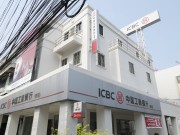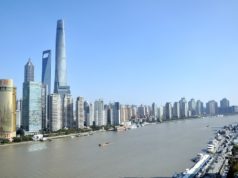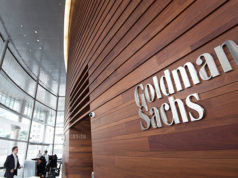UBS Global Real Estate Bubble Index Report 2023: Zurich & Tokyo Face Bubble Risks, Financial Centres Hong Kong & London Overvalued, New York, Singapore & Dubai Fairly-Valued, Hong Kong 22 Years & Singapore 10 Years to Buy Near-City Center Apartment, and 42 Years in Hong Kong & 23 Years in Singapore for Rental for Fully Pay Near-City Center Apartment
29th September 2023 | Hong Kong
UBS has released the UBS Global Real Estate Bubble Index Report 2023, providing key data & insights into the top global cities real estate valuation & bubble-risk, price change in 2022 and in the last 10 years, no. of years required to buy near-city-centre apartments, and no. of rental years to fully pay for near-city-centre apartments. In 2022, of the top 25 cities, 2 cities face bubble risk and 14 cities are overvalued. The 2 cities facing bubble risks are Zurich & Tokyo. In 2021, 9 cities had faced bubble risks (previous year listing) – Toronto, Frankfurt, Zurich, Munich, Hong Kong, Vancouver, Amsterdam, Tel Aviv & Tokyo. 14 cities are overvalued – Miami, Munich, Frankfurt, Hong Kong, Toronto, Geneva, Los Angeles, London, Tel Aviv, Vancouver, Amsterdam, Stockholm, Paris, Sydney. The Top financial centres bubble risk – Zurich, Tokyo. The Top financial centres overvalued – Hong Kong, London. The Top financial centres fairly-valued – New York, Singapore, Dubai. Years to buy near-city center apartment in HK & SG – Hong Kong 22 years, Singapore 10 years. Years to buy near-city center apartment – 15 years in Tokyo, 11 years in London, 8 years in New York, 8 years in Zurich, 7 years in Sydney, 6 years in Dubai, 5 years in San Francisco. Rental to fully pay for near-city center apartment in HK & SG – 42 years in Hong Kong, 23 years in Singapore. Rental to fully pay for the near-city center apartment – 41 years of rental in Geneva, 32 years in Tokyo, 29 years in Sydney, 24 years in London, 21 years in New York, 19 years in San Francisco, 15 years in Dubai. The Top 10 Cities price increase in last 10 years (annualized) – Miami +7.6%, Toronto +5.7%, Amsterdam +5.2%, Los Angeles +5%, Tokyo +4.8%, Frankfurt +4.8%, Vancouver +4.8%, Munich +4.6%, Tel Aviv +4.5%, Sydney +3.9%. See below for key findings & summary | View report here.
“ UBS Global Real Estate Bubble Index Report 2023: Zurich & Tokyo Face Bubble Risks, Financial Centres Hong Kong & London Overvalued, New York, Singapore & Dubai Fairly-Valued, Hong Kong 22 Years & Singapore 10 Years to Buy Near-City Center Apartment, and 42 Years in Hong Kong & 23 Years in Singapore for Rental for Fully Pay Near-City Center Apartment “
UBS Global Real Estate Bubble Index Report 2023

UBS has released the UBS Global Real Estate Bubble Index Report 2023, providing key data & insights into the top global cities real estate valuation & bubble-risk, price change in 2022 and in the last 10 years, no. of years required to buy near-city-centre apartments, and no. of rental years to fully pay for near-city-centre apartments. In 2022, of the top 25 cities, 2 cities face bubble risk and 14 cities are overvalued.
Summary:
- Top 25 cities – 2 cities face bubble risk, 14 cities are overvalued.
- 2 Cities facing bubble risks – Zurich, Tokyo
- 9 Cities faced bubble risks (previous year listing) – Toronto, Frankfurt, Zurich, Munich, Hong Kong, Vancouver, Amsterdam, Tel Aviv & Tokyo
- 14 Cities overvalued – Miami, Munich, Frankfurt, Hong Kong, Toronto, Geneva, Los Angeles, London, Tel Aviv, Vancouver, Amsterdam, Stockholm, Paris, Sydney
- Top financial centres bubble risk – Zurich, Tokyo
- Top financial centres overvalued – Hong Kong, London
- Top financial centres fairly-valued – New York, Singapore, Dubai
- Years to buy near-city center apartment in HK & SG – Hong Kong 22 years, Singapore 10 years.
- Years to buy near-city center apartment – 15 years in Tokyo, 11 years in London, 8 years in New York, 8 years in Zurich, 7 years in Sydney, 6 years in Dubai, 5 years in San Francisco.
- Rental to fully pay for near-city center apartment in HK & SG – 42 years in Hong Kong, 23 years in Singapore.
- Rental to fully pay for the near-city center apartment – 41 years of rental in Geneva, 32 years in Tokyo, 29 years in Sydney, 24 years in London, 21 years in New York, 19 years in San Francisco, 15 years in Dubai.
- Top 10 Cities price increase in last 10 years (annualized) – Miami +7.6%, Toronto +5.7%, Amsterdam +5.2%, Los Angeles +5%, Tokyo +4.8%, Frankfurt +4.8%, Vancouver +4.8%, Munich +4.6%, Tel Aviv +4.5%, Sydney +3.9%
UBS Global Real Estate Bubble Index Report 2023
1) UBS Observations:
- Housing prices declined – Most urban centres house price declined in last 4 quarters. Cities with bubble risk over last 3 years, price declined by 10% on average
- Bubble risks – Only 2 cities in bubble risks, Zurich & Tokyo. Both have low mortgage rates, high inflation rate had minimal market impact
- Housing affordability – Dropped in budget for housing as mortgage rates have increased 3x since 2021 in most markets. Most countries household loans have declined.
- Inflation & interest rates – Rising interest rates lower housing prices, but inflation supports income & rental growth
- Forecast – More downside in real house prices. Housing shortages will lead to renewed boom, if interest rates fall
- In demand – Most sought-after locations are Singapore, Dubai & Miami. In last 2 years, prices have increased +40%, rents +50%
2) Top 25 Cities Real Estate Valuation: Bubble Risk, Overvalued, Fairly Valued
- Zurich – Bubble Risk
- Tokyo – Bubble Risk
- Miami – Overvalued
- Munich – Overvalued
- Frankfurt – Overvalued
- Hong Kong – Overvalued
- Toronto – Overvalued
- Geneva – Overvalued
- Los Angeles – Overvalued
- London – Overvalued
- Tel Aviv – Overvalued
- Vancouver – Overvalued
- Amsterdam – Overvalued
- Stockholm – Overvalued
- Paris – Overvalued
- Sydney – Overvalued
- Milan – Fairly Valued
- New York – Fairly Valued
- Singapore – Fairly Valued
- Madrid – Fairly Valued
- Boston – Fairly Valued
- San Francisco – Fairly Valued
- Dubai – Fairly Valued
- São Paulo – Fairly Valued
- Warsaw – Fairly Valued
Previous Year Bubble Risk (9 cities):
- Toronto
- Frankfurt
- Zurich
- Munich
- Hong Kong
- Vancouver
- Amsterdam
- Tel Aviv
- Tokyo
3) Top 25 Cities Real Estate Valuation: Price Growth 2022 / Last 10 Years Annualized
- Zurich: +1.5% / +3.4%
- Tokyo: +3.6% / +4.8%
- Miami: +6% / +7.6%
- Munich: -13.8% / +4.6%
- Frankfurt: -15.9% / +4.8%
- Hong Kong: -7.1% / +0.8%
- Toronto: -14.7% / +5.7%
- Geneva: -0.1% / +1.1%
- Los Angeles: -3.7% / +5%
- London: -13.9% / +0.9%
- Tel Aviv: -0.7% / +4.5%
- Vancouver: -10.6% / +4.8%
- Amsterdam: -14% / +5.2%
- Stockholm: -22.1% / +2.4%
- Paris: -7.9% / +0.6%
- Sydney: -10.5% / +3.9%
- Milan: -1.9% / -1%
- New York: +3.2% / +1.3%
- Singapore: +2.8% / +0.9%
- Madrid: +2.9% / +2.3%
- Boston: -3.4% / +3.5%
- San Francisco: -10.6% / +2.7%
- Dubai: +14.6% / -0.1%
- São Paulo: +1.4% / -2.1%
- Warsaw: -9.3% / +1.8%
4) Top 10 Cities price increase in 10 years (Annualized):
- Miami +7.6%
- Toronto +5.7%
- Amsterdam +5.2%
- Los Angeles +5%
- Tokyo +4.8%
- Frankfurt +4.8%
- Vancouver +4.8%
- Munich +4.6%
- Tel Aviv +4.5%
- Sydney +3.9%
5) No. of Years to Buy Near-City Center Apartment*
- Hong Kong – 22 Years
- Tokyo – 15 Years
- Paris – 14 Years
- Tel Aviv – 12 Years
- London – 11 Years
- Singapore – 10 Years
- Munich – 9 Years
- São Paulo – 9 Years
- New York – 8 Years
- Zurich – 8 Years
- Geneva – 8 Years
- Milan – 7 Years
- Sydney – 7 Years
- Amsterdam – 7 Years
- Vancouver – 7 Years
- Frankfurt – 7 Years
- Warsaw – 7 Years
- Los Angeles – 7 Years
- Dubai – 6 Years
- Boston – 6 Years
- Stockholm – 6 Years
- Toronto – 6 Years
- Madrid – 5 Years
- San Francisco – 5 Years
- Miami – 5 Years
In Hong Kong, it takes 22 years for a skilled worker to buy a near-city center apartment, in Singapore it takes 10 years. In comparison, it takes 15 years in Tokyo, 11 years in London, 8 years in New York, 8 years in Zurich, 7 years in Sydney, 6 years in Dubai and 5 years in San Francisco.
*Income of Skilled Worker to Buy 60 sqm (650 sqft) Near-City Center Apartment
6) No. of Rental Years to Fully Pay Near-City Center Apartment*
- Tel Aviv – 42 Years
- Hong Kong – 42 Years
- Geneva – 41 Years
- Zurich – 40 Years
- Munich – 39 Years
- Frankfurt – 37 Years
- Tokyo – 32 Years
- Paris – 31 Years
- Sydney – 29 Years
- Stockholm – 28 Years
- Milan – 27 Years
- Amsterdam – 26 Years
- London – 24 Years
- Singapore – 23 Years
- Toronto – 22 Years
- Vancouver – 21 Years
- Boston – 21 Years
- Madrid – 21 Years
- New York – 21 Years
- Los Angeles – 20 Years
- São Paulo – 19 Years
- San Francisco – 19 Years
- Warsaw – 18 Years
- Dubai – 15 Years
- Miami – 15 Years
If relying on rental to fully pay for the near-city center apartment, it takes 42 years in Hong Kong, and 23 years in Singapore. In comparison, it takes 41 years of rental in Geneva, 32 years in Tokyo, 29 years in Sydney, 24 years in London, 21 years in New York, 19 years in San Francisco, and 15 years in Dubai.
*Income of Skilled Worker to Buy 60 sqm (650 sqft) Near-City Center Apartment
UBS Global Real Estate Bubble Index
The UBS Global Real Estate Bubble Index traces the fundamental valuation of housing markets and the valuation of cities in relation both to their country and to economic distor- tions (lending and building booms). Tracking current values, the index uses the following risk-based classifications: depressed (score below –1.5), undervalued (–1.5 to –0.5), fair-valued (–0.5 to 0.5), overvalued (0.5 to 1.5), and bubble risk (above 1.5). This classification is aligned with historical bubble episodes. We cannot predict if or when a correction will happen. Hence, “bubble risk” refers to the prevalence of a high risk of a large price correction. The index score is a weighted average of the following five standardized city sub-indices: price-to-income and price-to- rent ratios (fundamental valuation), change in mortgage-to- GDP ratio and change in construction-to-GDP ratio (economic distortion), and city-to-country price ratio. The city-to-country price ratio in Singapore, Hong Kong, and Dubai is replaced by an inflation-adjusted price index. The approach cannot fully account for the complexity of the bubble phenomenon. The sub-indices are constructed from specific city-level data, except for mortgage-to-GDP and construction-to-GDP ratios, which are calculated on the country level. In most cases, pub- licly available data is used. But in a few cases, the data consists of, or is supplemented by additional sources, including the results of the UBS Prices and Earnings survey. The index length varies by city depending on data availability. The longest data series starts in 1980, the shortest in 2009. For time series shorter than 30 years, the coefficient of variation of an equivalent indicator on the country level is used as a floor value to calculate the volatility of the city-level indicator (subject to availability). We also took into account the availability of data when deciding which cities to include in the index. We considered the importance of the city for global financial markets and residential real estate investments. Please see the description of data sources on page 24. The weights of the sub-indices are determined using factor analysis, as recommended by the OECD Handbook on Constructing Composite Indicators (2008). Factor analysis weights the sub-indices to capture as much of the common underlying bubble risk information as possible. As the drivers of bubbles vary across cities, this method results in city-specific weights on sub-indices. To prevent overweighting country level variables and to increase the comparability of cities, the devia- tion from the average weight across all cities is limited. Weights adjusted this way approximate the average factor analysis weight of single indices across the cities and comple- ment the calculation. The final weights are subject to minor changes when new data enters the calculation or past data is revised.
Benchmarking
The analysis is complemented by a city benchmarking using current price-to-income and price-to-rent ratios. The price-to- income ratio indicates how many years a skilled service worker needs to work to be able to buy a 60 square meter (650 square foot) flat near the city center. The price-to-rent ratio signals how expensive owner-occupied homes are relative to rental apartments. The higher the ratios, the more expensive buying becomes. Earnings data is taken primarily from the UBS Prices and Earnings survey and from official statistical sources. Real estate prices and rents vary widely near the city center. Our estimates are cross-checked, validated using differ- ent sources, and are updated and challenged on an annual basis. However, we also specify an uncertainty range due to the differing quality of data sources.
Sign Up / Register
Caproasia Users
- Manage $20 million to $3 billion of assets
- Invest $3 million to $300 million
- Advise institutions, billionaires, UHNWs & HNWs
Caproasia Platforms | 11,000 Investors & Advisors
- Caproasia.com
- Caproasia Access
- Caproasia Events
- The Financial Centre | Find Services
- Membership
- Family Office Circle
- Professional Investor Circle
- Investor Relations Network
Monthly Roundtable & Networking
Family Office Programs
The 2025 Investment Day
- March - Hong Kong
- March - Singapore
- July - Hong Kong
- July - Singapore
- Sept- Hong Kong
- Sept - Singapore
- Oct- Hong Kong
- Nov - Singapore
- Visit: The Investment Day | Register: Click here
Caproasia Summits
- The Institutional Investor Summit
- The Investment / Alternatives Summit
- The Private Wealth Summit
- The Family Office Summit
- The CEO & Entrepreneur Summit
- The Capital Markets Summit
- The ESG / Sustainable Investment Summit










































